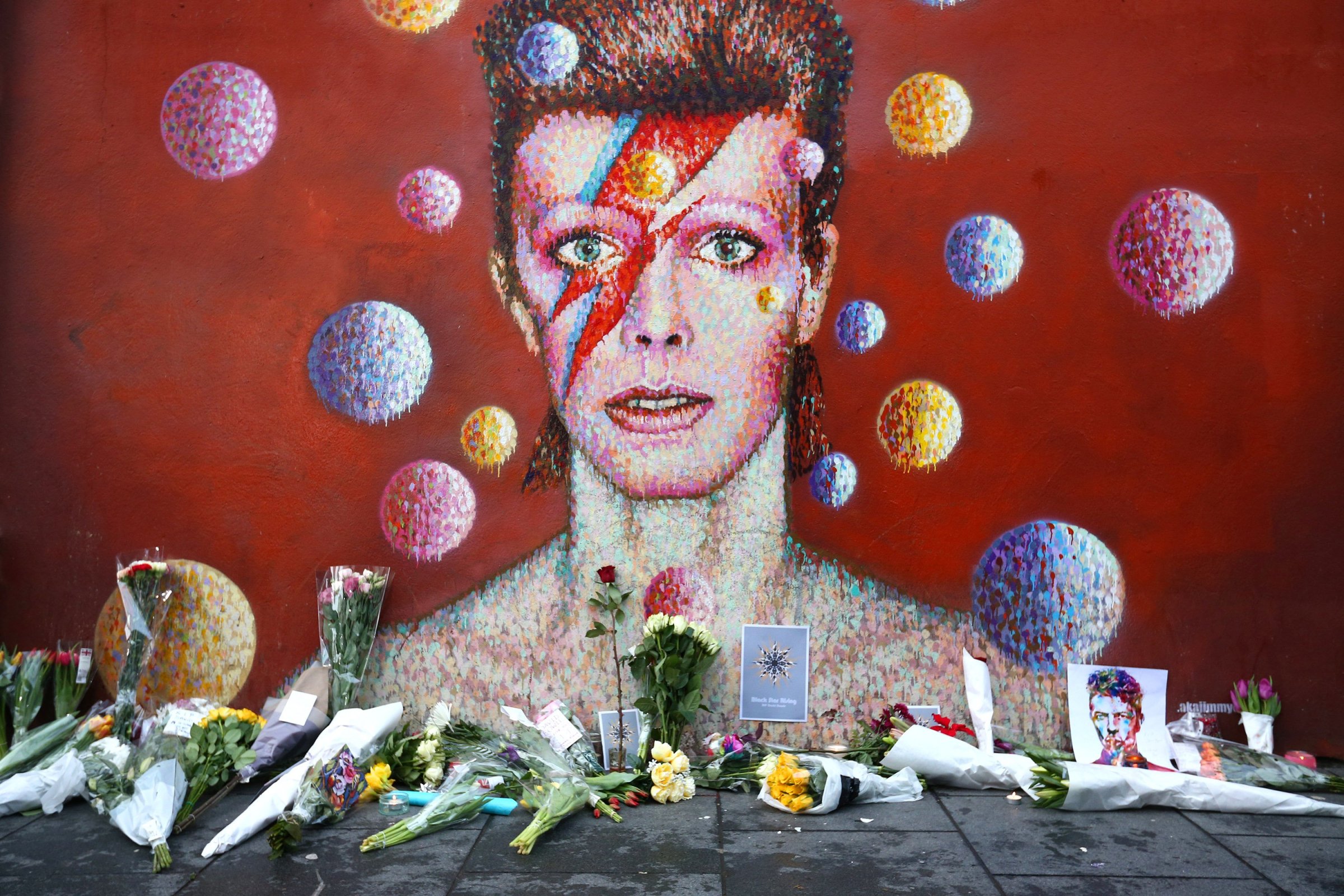
“David Bowie. Our Brixton Boy. RIP,” reads a sign in big white letters on the facade of the Ritzy theatre in Brixton, the neighbourhood in London where the pop star was born.
At a nearby mural, fans flocked to pay tribute to the late singer. Piles of flowers lay at the foot of the mural, which depicts Bowie with his signature face painting of a red and blue lighting bolt across his eye.
Adam Skids, a 47-year-old artist and musician, who was playing the tune “Rebel, Rebel,” on his harmonica, said he has loved David Bowie since his mother brought him to a concert in Birmingham when he was only five years of age. “I wanted to have a wake for Dave today,” he says of his visit to the mural.
Having painted her face with the same lightening bolt, Rosie Lowery, 21, who lives in London, came to honor Bowie. She says Bowie’s genius was in his music’s ability to make you feel as though he was “speaking directly to you.”
For Mavis Goulbourne, a woman of Jamaican heritage in her late 50’s who grew up in Brixton, Bowie evokes England in the late 1960’s and early 1970’s. “England was going through a dull period,” she says. “He brought color.”
In the 1950’s, not long after David Bowie’s birth in 1947, Brixton was home to an influx of immigrants from the Caribbean. In the early 1980’s, many of the neighbourhood residents became disaffected by high unemployment and poor relations with the police, which culminated with famous race riots in 1981. Today, it has been gentrified with upscale bars and clubs, which some Londoners say, changes the essence of the place.
More Must-Reads from TIME
- Donald Trump Is TIME's 2024 Person of the Year
- Why We Chose Trump as Person of the Year
- Is Intermittent Fasting Good or Bad for You?
- The 100 Must-Read Books of 2024
- The 20 Best Christmas TV Episodes
- Column: If Optimism Feels Ridiculous Now, Try Hope
- The Future of Climate Action Is Trade Policy
- Merle Bombardieri Is Helping People Make the Baby Decision
Contact us at letters@time.com